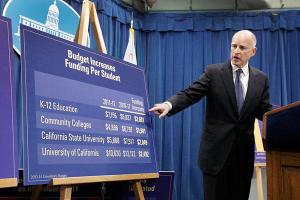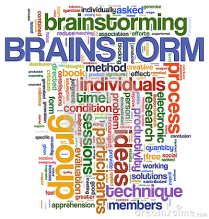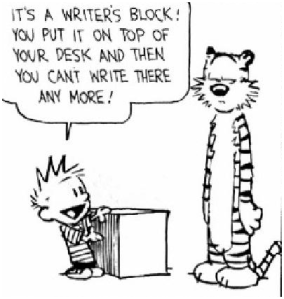 In November 2012, California voters approved Propositions 30 and 39, both of which fiscally impacted California’s public schools and taxpayers as the state tried to slowly pull out of major economic recession. Because both propositions raised taxes, one can argue that the measures stand to increase equity and adequacy for students.
In November 2012, California voters approved Propositions 30 and 39, both of which fiscally impacted California’s public schools and taxpayers as the state tried to slowly pull out of major economic recession. Because both propositions raised taxes, one can argue that the measures stand to increase equity and adequacy for students.
Proposition 30, officially titled “Temporary Taxes to Fund Education”, increased income taxes on wealthier Californians for seven years and increased the sales and use tax by ¼ cent for four years. The legislative analyst’s estimated fiscal impact projected additional state tax revenues of about $6 billion from 2012-2017; however, because the vast majority of the revenue came from the personal income tax (PIT) increases, the revenues could swing up or down depending on the income of the upper-income taxpayers, particularly the investment income.
One of the main motivators for the passage of Prop 30 was the fact that the state legislature passed the governor’s 2012-13 budget “which he wrote as if a November affirmative vote was a done deal on Prop. 30’s revenue increases and were available for the state budget” (Ershadi, 2012, p. 1). If voters rejected Prop 30, the governor warned Californians that $6 billion would have to be cut from vital state services with the vast cuts hitting public schools, community colleges, and the state’s university systems. Governor Brown applauded the vote and the legislation saying, “The core reason it brought people together was a belief in schools and universities and the capacity of government to make wise investments that benefit all of us” (Rosenberg, 2012, p. 1).
While Prop 30 was billed as a temporary tax to stabilize California’s schools after years of economic distress, Proposition 39 was more rhetorically named “The California Clean Energy Jobs Act.” Of the projected $1 billion in additional state revenues, about half would be dedicated for the next five years to the funding of projects that create energy efficiency and clean energy jobs in California. The remaining revenues would likely be spent on public schools and community colleges as the state attempts to fill the Prop 98 minimum guarantee. According to the California Energy Commission, the California Legislature appropriated $381 million for energy efficiency and clean energy projects. The amounts received by local school districts vary based on a formula that factors average attendance and the number of students eligible to receive free and reduced-priced meals (PR, 2012).
Prop 39 won comfortably with 60% of the vote most likely because voters believed the measure closed “a loophole that allowed big multistate businesses to pay fewer state taxes” (Rosenberg, 2012, p. 2). Rather than giving in-state businesses tax breaks, Prop 30 sought increased tax revenues from multi-state business that pay employees in states other than California (Ershadi, 2012).
While Governor Brown cheered the victory of both measures, Prop 30 had the greatest fiscal impact on the state’s budget shortfall and therefore stood to have the most impact on the equity and adequacy of California’s funding of public education. However, according to Bacon (2014), California could teeter off another fiscal cliff in 2018 when the bulk of the Prop 30 funds expire. Some supporters hope that the state legislature will just renew the measure instead of sending it back to the voters. Districts like LA Unified were able to cancel unpaid furlough days, restore summer school and adult classes, and avoid more layoffs (Calefati & Richman, 2013). Opponents of extending Prop 30 cite the language used in the title of the measure… temporary taxes. Taxation watchdogs also argue that the state’s wealthiest residents are shouldering an “unfair burden – and that other Californians will come to regret the decision to raise the taxes of the rich” (Calefati & Richman, 2013, p. 2). Even in light of the criticisms of Prop 30, it appears that public education received more adequate funding because voters approved temporary increases on the highest income earners and the state sales tax.
Regarding equity, Prop 30 allowed Governor Brown to implement the Local Control Funding Formula (LCFF) that funnels more of the Prop 30 money to schools with high numbers of poor students, foster youth, and English-learners (Calefati & Richman, 2013). In addition to the LCFF allocation, Prop 30 positively impacted the equity of California’s educational system by shoring up the state’s higher-education system, particularly the community colleges that most directly serve low-income populations. An immediate impact will be increased sections of fundamental lower-division classes. “Because nearly half a million of the 2.4 million students attending community colleges have been turned away from full classes over the past four years, … increasing access was the first priority” (Gardner, 2012, p.2). Unfortunately, community college chancellor Brice W. Harris admits, “We’re still going to have students who can’t get as many courses as they want, and we’re going to have more demand than we have courses available. It will take time” (PR, 2012, p.2).
Looking back, Props 30 and 39 positively impacted California’s mandates to equitably and adequately fund public primary, secondary, and higher education. Looking ahead, Governor Brown is stumping for Prop 2 in next week’s election. Titled the Rainy Day Budget Stabilization Fund Act, Prop 2 would ostemsibly strengthen the Prop 98 mandated reserves, creating a separate education reserve. The controversy about this meausre is that state educational leaders question the logic of telling voters that California schools are underfunded while stockpiling money in a proverbial lock box (Fensterwald, 2014). The new applications of voter approved measures such as Props 30, 39, and 98 may prove troublesome in the near future; however, at this point leaders such as Governor Brown are trying to create remedies for a fiscal disaster that negatively impacts today’s students.
References
Bacon, D. (2014, May). Prop 30 “saved public higher education” Perspective, 45(3), 8.
Calefati, J., & Richman, J. (2013, November 10). Proposition 30: A year later, California schools seeing benefits of tax measure. San Jose Mercury News.
Ershadi, J. (2012, October 1). Initiative roundup: States split on tax hikes. Human Events, 68(37), 18.
Fensterwald, J. (2014, April 27). Governor’s proposed rainy day reserve for education would rarely be filled. Edsource.org.
Gardner, L. (2012). With Proposition 30 approved, California’s public colleges look to rebuild. Chronicle Of Higher Education, 59(12), A8.
PR, N. (2012, July 26). Campaign launched challenging Chrysler, General Motors, Kimberly-Clark, and international paper to stand up for California by supporting Proposition 39. PR Newswire US.
Rosenberg, M. (2012, November 7). California tax measures: Props. 30 and 39 emerge victorious; Prop 38 loses. MercuryNews.com.





 cited before in other blogs. In the article, Lepi makes the point that the summer can be an excellent opportunity for professional development, and the teachers get to control the content and the where/when.
cited before in other blogs. In the article, Lepi makes the point that the summer can be an excellent opportunity for professional development, and the teachers get to control the content and the where/when. help to set up my BIG second semester change… a tablet or laptop will be required in Mrs. Norton’s AP classes starting in 2015. Am I little behind? I don’t care. As Walt Disney quoted time and time again, “Keep Moving Forward!”
help to set up my BIG second semester change… a tablet or laptop will be required in Mrs. Norton’s AP classes starting in 2015. Am I little behind? I don’t care. As Walt Disney quoted time and time again, “Keep Moving Forward!”

